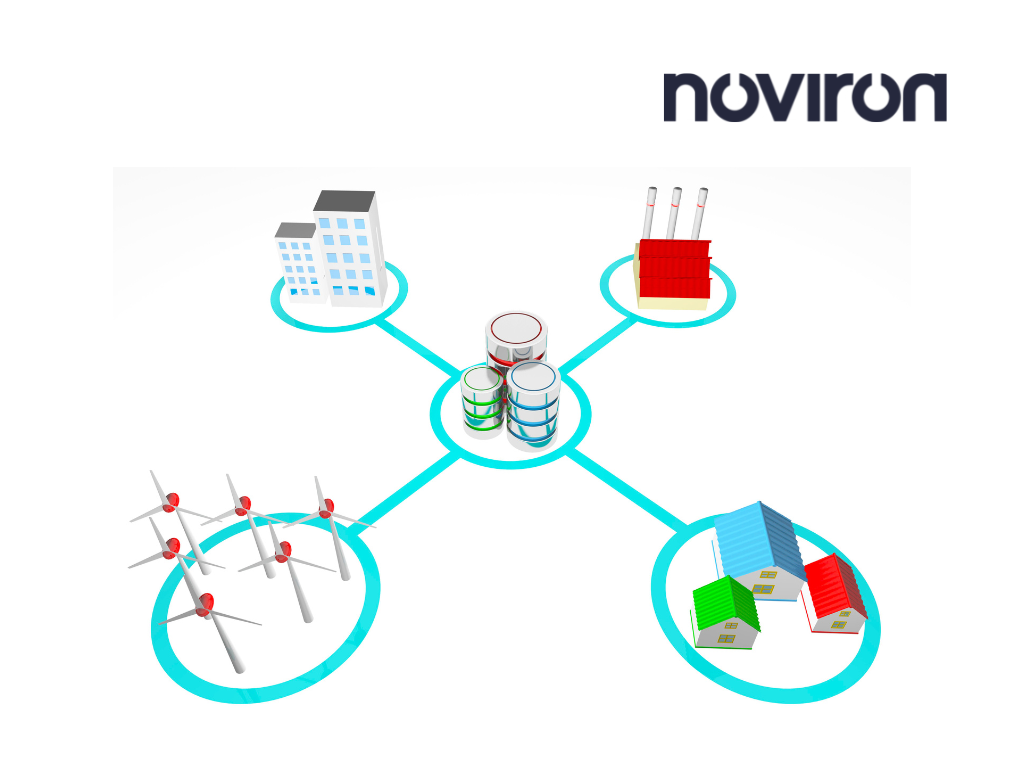Role of Artificial Intelligence and Big Data in the renewable energy segment
As a rising trend, AI and Big data are widely used technologies where no corner of any product or service sector remains untouched. AI is in demand for many reasons, and big data is its subordinate and complementary side for storing and processing a large amount of data. Before turning and discussing the same in the context of renewable energies, we will briefly discuss these technologies.
Artificial Intelligence: the latest and widely discussed trend in modern and advanced technology. The term is decades old, and the word “Artificial Intelligence” was first adopted by American computer scientist John McCarthy at the Dartmouth Conference. Artificial Intelligence is a way of learning where machines can understand, logically assess, and analyze a given set of input commands, interpret, discover from the repository or dictionary of a data warehouse, and be able to learn from third-party information in a way in which machines are operationally mimicking the neurological practices usually attributed to humans. Artificial Intelligence is based on the impulse that human thought processes have the power to both reproduce and automate.

What to anticipate for AI?
Artificial intelligence refinements are emerging at an exceptional rate. That said, the last decade’s trends are expected to keep moving forward in the coming year. Here are a few things to keep our eyes straight, but they are not exhaustive:
- Chatbots + virtual assistants: strengthening chatbot and virtual assistant automation for heightened user experience
- Natural language processing (NLP): advanced NLP capabilities for AI-enabled apps, including chatbots and virtual assistants.
- Machine Learning and Automated Machine Learning: ML will move toward AutoML algorithms to authorize designers and programmers to solve issues without forming particular prototypes.
Autonomous vehicles: AI has been tested for automated vehicles. There will be a more vigorous thrust to automate the process of driving products from point A to point B. It helps save the cost of human labor. It optimizes the purchase-shipment-arrival process to consumers via self-driving vehicles that—in actuality—will not get exhausted behind the swirl.
“Big Data” is a cluster of data that is massive in volume and growing exponentially and proportionally over time. It is a data set of enormous size and complexity that only some of the conventional database management tools can hold or execute efficiently.
The role of AI & Big Data in Renewable Energy
AI and machine learning are the technologies changing the future of renewable energy. In the past decade, many progressive nations globally have changed their priorities to generating renewable energies. Governments worldwide plan to rely on clean and green energy sources. It is good to see progress in the renewable energy industry. Still, the industry faces its own set of constraints and challenges because we must obtain energy from completely uncontrollable sources and beyond the scope of humans. Furthermore, these resources do not exist in the same quantity in all sectors of the planet Earth.
With progressive technologies like AI and machine learning, it is vital to transform the renewable energy niche. By tailoring the potential of AI, energy businesses are blessed with more accurate ideas and weather predictions, and due to that, it has become possible to manage grids and schedule maintenance in a timely and advanced fashion. AI is the central aspect of any weather prediction, and thus, big data is needed to save those patterns and process the records on demand. As the primary energy stakeholder, the industrial sector aims to achieve energy efficiency by accumulating and visualizing data to prevent energy waste and make smart savings.

What is energy efficiency?
A famous saying is that “a penny saved is a penny earned.” Suppose we understand the term “efficiency” in energy. In that case, it resembles how we use energy economically, where power could be generated by saving energy and not letting it go to waste for any reason.
Now we will understand a few scenarios where AI can handle this phenomenon more accurately. Let us talk about a system and an AI algorithm that guides the solar panels to be tilted to achieve maximum throughput in terms of the guided direction in line with the sun. If there is such a system developed, more energy could be generated. At the same time, if an AI algorithm works smartly so that the power turns off when there is no effective energy use, energy waste could be stopped.
Overall, we can consider energy efficiency in energy consumption parameters and manufacturing processes. It affects all business activities, including those of companies and institutions, value chains, etc. It consists of applied technology approaches that, in addition to providing a competitive and inclusive advantage, positively impact the environment, society, and economy.
On a quick note, it lowers both energy failures and the smart consumption of energy driven by artificial intelligence technologies.
It is straightforward that energy is an integral element. Still, its negative impacts, such as environmental decay, resource shortages, and energy dependency, put energy efficiency options and/or solutions in the limelight.
How AI and Big Data Are Useful In Renewable Energy Sector?
AI technologies have recently experienced a boom, including massive data processing, powerful computing, enhanced machine learning algorithms, and deep learning algorithms. Even Google can reduce its field device maintenance costs by utilizing AI-based deep learning algorithms.
Artificial Intelligence (AI) technology can help the energy industry take advantage of the growing opportunities brought by the development of the Internet of Things (IoT) and the integration of renewable energy sources (Sodhro et al., 2019)
Energy production, distribution strategy, and consumption are significant drivers of the global economy. Infrastructures for the smart energy sector include supercomputers, power electronics, cyber technologies, information, and two-way communication between the equipment control center and the equipment itself (Bose, 2017). Power grid infrastructures are currently too old, inefficient, outdated, and unstable, and they do not offer enough protection in the event of a catastrophe.

Conventional power grids were not designed to handle the integration of renewable energy sources (RES). Changes in RES characteristics (e.g., wind, solar, geothermal, hydrogen) make it more challenging to meet the variable loads of the power grid. The energy industry is being revolutionized by advances in AI technology (such as machine learning, deep learning, IoT, big data, etc.). Various tasks have been performed using artificial Intelligence in many countries, including power system control, forecasting, and efficient operation (Kow et al., 2016).
AI facilitates efficient inverter control of photovoltaic (PV) systems and amplifies the ability to trace power points. Artificial methods are effective and can increase performance compared to conventional power point tracking approaches. The role of AI in the planning and forecasting of load demand, forecasting of solar energy, forecasting of wind energy, and forecasting of hydro and geothermal energy have been well recognized. The forecast strives to decrease uncertainty and present benchmarks for supervising the actual undertaking of power networks. Artificial Intelligence has the potential to handle all synchronization of renewable power channels, allowing energy transition technologies to be further mastered.
Various Applications of AI in Renewable Energy Space
Weather Forecasting
Predictive AI: Renewable energy is highly unpredictable as it is dependent on sources like sunlight, wind, and water, which are 100% weather dependent, and hence a prior analysis is needed to achieve the maximum. Suppose the weather is favorable to energy companies. In that case, they can produce more and more energy and store it for future uses or in abnormal weather conditions. All this is possible through initial analysis and assessment of historical data and patterns.

Grid Power Requirement Management
AI can play a significant role in grid energy management via user or household energy consumption patterns. The same is valid for industrial energy requirements, which is again possible by analyzing the historical data concerning time. Thus, AI can help manage the energy demand and supply chain.
Maintenance
One of the most salient features of AI is that it allows power companies to maintain their power plants by knowing in advance when they can put their resources into maintenance at the time of most minor energy consumption. This allows energy companies to notify customers about scheduled maintenance opportunities; as a result, customers will be prepared for power outages ahead of time, which does not happen in the current system. This is, again, an application of AI technology.
Operation and Maintenance of PV Power plants
Through AI, one could assess the parts of failure in the PV energy system, and this is possible by identifying the loopholes in the existing PV unit. Once the fault is recognized, the system can be easily fixed. This is possible using a functional data repository, performing comparisons, and analyzing the daily throughput regardless of weather conditions. The aim is to detect the components with the lowest performance.
Cyber Attack And Security
Energy grids are prone to cyberattacks, and it is very common for hackers to hack data servers. With AI and machine learning support, one can make it more secure and safe, as AI can help understand the threats and prevent them beforehand.
Smart Grid Management
Conventional grids generally work and supply energy uniformly, while smart microgrids do the same with computerized, AI-enabled technology. The microgrid is usually small compared to the traditional grid, and it uses AI to optimize the energy transition and for optimal use. Microgrids also provide energy security during times of emergency.

Different enterprise solution providers are assembling the technology for applications in the energy transition. This incorporates Amazon Web Services, Microsoft Azure, Google’s Cloud Technology, and IBM Watson, which nourish Artificial Intelligence and machine learning solutions to the utility industries. Out of them, the energy industry is the one.
Source:
https://www.forbes.com/
https://www.sciencedirect.com/
https://www.saurenergy.com/
https://www.ey.com/
https://nexusintegra.io/
Looking for a way to improve your knowledge in the Renewable Energy sector? Check our upcoming online courses ->
